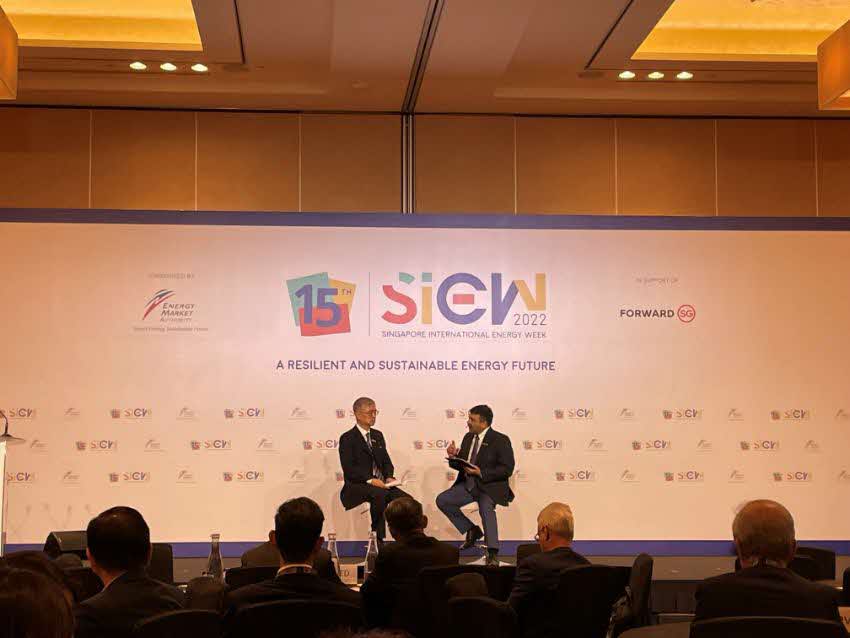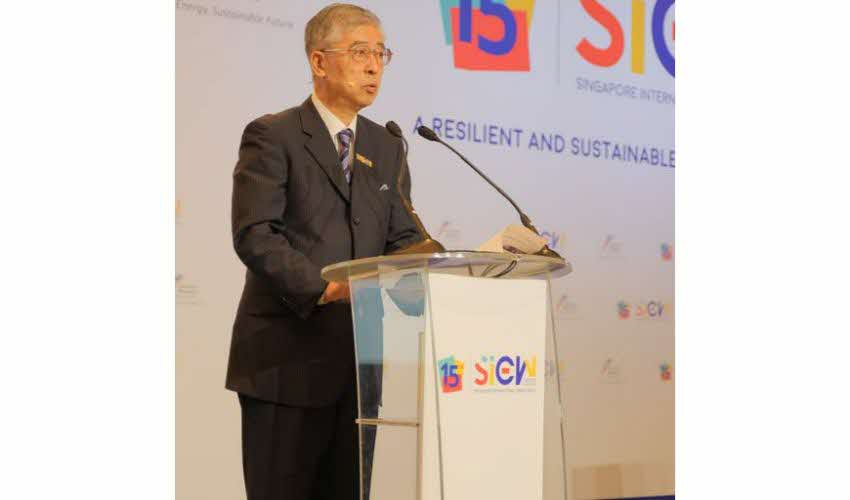Despite negative sentiments towards the use of fossil fuels due to the urgency of climate action, Dr Kazutomo Irie, President of Asia Pacific Energy Research Centre (APERC), said fossil fuels are here to stay for some time considering the growth in energy demand around the world. Ho Wai Ying reports.

At the SIEW Energy Insights, Dr Irie presented key findings from the 8th edition of the Outlook. This was officially launched in Tokyo, Japan earlier this year in September. The Q&A session after the presentation was moderated by KPMG.

Two scenarios, both driven by macroeconomic trends including population and gross domestic product (GDP) growth rate, were explored:
- Reference Scenario (REF) to provide a baseline comparison. In this scenario, there is a continuation of current policies and trends.
- Carbon Neutrality Scenario (CN) where hypothetical decarbonisation pathways were considered for each APEC economy, with associated improvements in energy efficiencies and increased adoption of low carbon fuels and carbon capture and storage (CCS).
Increased energy efficiencies and electrification reduces energy demand
Driven by energy efficiency improvements, Dr Irie shared that while economic activity doubled in the APEC countries, the growth in energy demand increased by only 14% in the REF scenario.
Electricity end-use energy demand share increased to 29% and 41% in the REF and CN scenarios respectively, driven by increased electrification across all sectors.
Fossil fuels feature strongly despite growth in wind and solar power generation
Although electricity demand is increasingly met with renewable energy, including wind and solar, fossil fuels continue to contribute significantly to APEC energy demand and supply.
In 2018, fossil fuels contributed 86% of the energy supply; this will fall to 74% and 55% in 2050 for both scenarios. “It means more than half of APEC’s energy supply will be from fossil fuels in 2050,” said Dr Irie.
For power generation, natural gas will remain an important fuel to substitute coal. It will also contribute a substantial share of the fuel mix through 2050 for both scenarios.
APEC on track to meet its energy goals
As a result of improvements in energy efficiency in various sectors and an increased share of wind and solar power generation, Dr Irie shared that APEC is on track to meet its climate targets of improving energy intensity by at least 45% by 2035 from 2005 levels, and doubling the share of renewables consumption by 2030 compared to 2010.
With regard to CO2 emissions, Outlook predicted that emissions would reduce by 14% and 67% respectively in the REF and CN scenarios, driven mainly by emissions reduction measures in the power and transport sectors.
Oil and gas security remains a concern
The increased reliance on solar and wind power generation could lead to electricity grid unreliability. “Even in the Carbon Neutral scenario, the APEC region cannot solely rely on renewables. Efforts to discourage oil and gas investments are not welcomed at this moment as it will reduce the energy stability of this region,” said Dr Irie.
The session ended with Dr Irie urging the audience to keep a lookout for the 9th edition of the APEC Energy Demand and Supply Outlook. This will incorporate factors such as the ongoing Russia-Ukraine War and the impact of new decarbonisation technologies into the analysis.
Follow us on Twitter (@SIEW_sg) to get the latest #SIEW2022 updates throughout the day!